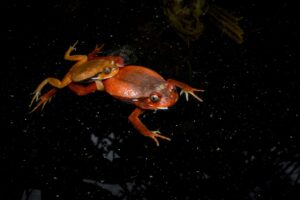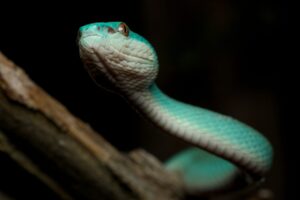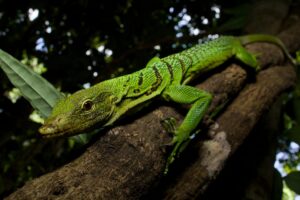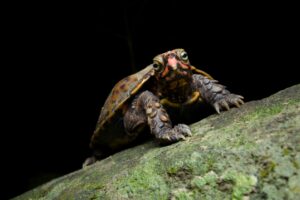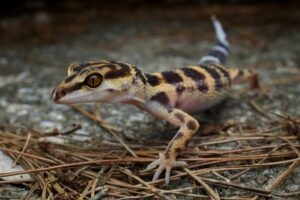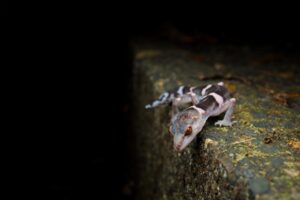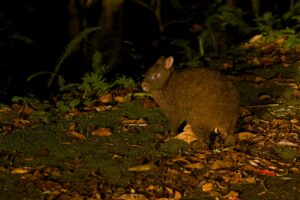
Madagascar is home to many unique reptiles, including the Satanic Leaf-Tailed Gecko (Uroplatus phantasticus), a highly sought-after species due to its beautiful patterns and elusive nature. This article shares my firsthand experience observing these wild geckos, covering habitat, temperature and humidity, field observation tips, feeding behavior, and shedding.
Observation Sites and Season
- The locations I visited allowed observation for three consecutive years, with a 100% success rate.
- My visit was in September, at the end of the local winter. Although it was not the optimal season for reptiles, I observed seven Edaha Leaf-Tailed Geckos.
- Local guides report that these geckos can be observed year-round, even in the dry season.
Temperature and Humidity
- Early morning (coldest time): ~11°C
- Afternoon (hottest time): ~23°C
- After sunset (active period): ~17°C
- Forest floor humidity: 99% (remains high due to fog even in the dry season)
- Humidity decreases around 10 a.m. but rises again near sunset
Forest Floor Habitat
- The forest floor is covered with leaf litter, with almost no exposed soil.
- The soil beneath retains high moisture, providing ideal habitat for the geckos.
Field Observation Tips
- Daytime: Carefully inspect leaf litter and tree branches.
- Nighttime: Geckos are nocturnal and more active, making them easier to spot in exposed areas.
- Tip: They often stay in the same locations, so focusing on marked areas improves observation success.
Feeding Behavior
- The area has many cockroaches and spiders; tapping leaves with a stick reveals numerous potential prey items.
- These geckos are likely feeding on these insects.
Shedding Observation
- I also encountered a gecko in the process of shedding.
- Normally, they are found 30cm–2m above the ground, but during shedding, they remain about 10cm above the forest floor.
- The relationship between shedding and behavior is an interesting topic for future observation.
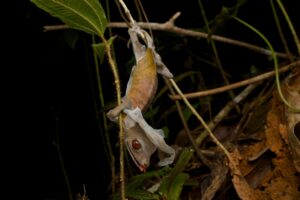
Summary
- Observing wild Edaha Leaf-Tailed Geckos in Madagascar requires knowledge of forest floor habitat, humidity, and nocturnal behavior.
- With proper preparation, even species with a 100% observation rate in certain locations can be encountered by visitors.
- Morning and evening humidity, forest floor conditions, and presence of prey insects are all key factors for successful observation.


